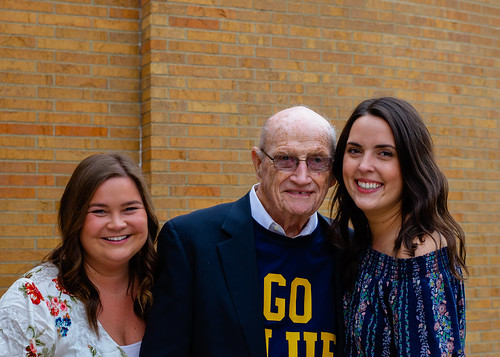Ournal of Surgical Oncology :Web page ofTable Summary of international guidelines concerning thromboprophylaxis in hospitalized cancer patients (Continued). There is certainly no evidence to assistance fondaparinux as an option to LMWH for the prophylaxis of postoperative VTE in cancer patients (grade C). Values and preferencessimilar . Use of the highest prophylactic dose of LMWH to stop postoperative VTE in cancer individuals is advisable (grade A). Values and preferencesequal . Extended prophylaxis (weeks) to stop postoperative VTE soon after big laparotomy in cancer individuals might be indicated in individuals using a high VTE risk and low bleeding danger (grade B). Values and preferenceslonger duration of injections . The usage of LMWH for the prevention of VTE in cancer individuals undergoing laparoscopic surgery could be encouraged in the same way as for laparotomy finest clinical practice, based on a balance among desirable and undesirable effects indicating an enhanced bleeding danger. Values and preferencesdaily injections CostsIn some nations, the price tag of LMWH may influence the option Mechanical procedures usually are not recommended as monotherapy except when pharmacological procedures are contraindicated (grade C). Values and preferencesno injection ACCP guidelines . For highVTErisk patients undergoing abdominal or
pelvic surgery for cancer who’re not otherwise at high danger for main bleeding complications, extended duration pharmacologic prophylaxis (weeks) with LMWH over limitedduration prophylaxis is encouraged (grade B).Extended prophylaxis is strongly advised specially for individuals undergoing important abdominal or pelvic surgery . This recommendation is primarily based on the final results of two randomized trials and one metaanalysis that showed better outcomes with extended postoperative prophylaxis just after major laparotomy surgery ,. Nonetheless, distinct considerations are accorded to lung and pancreatic cancer, especially in ESMO and ISTH suggestions where prophylaxis is systematically advised for these localizations ,. For patient with several myeloma, the International Myeloma Working Group  recommends prophylaxis with either LMWH or doseadjusted warfarin for patients getting lenalidomide or thalidomidebased combination regimens and also for individuals with two or more person or diseaserelated threat things as defined by the group .Initial treatmentTreatment of established VTETreatment of VTE Stattic biological activity normally population consists of an initial treatment having a fast acting parenteral anticoagulation with LWMH or UFH or fondaparinux overlapping with and followed by an oral vitamin K antagonist (VKA) (Tables and). Readily available data recommend that this regimen can’t be applied for cancer sufferers, in particular due to the larger risks of bleeding and recurrence within this certain population.Initial treatment is defined because the initially days of anticoagulation treatment. In our overview, we located only retrospective studies in cancer patients evaluating LWMH or UFH followed by VKA. 5 randomized research concerned LMWH in association with VKA, and six other people concerned UFH with VKA. General, recurrence rate was not negligible, and it reached . to . with LMWH and to with UFH; the two drugs were overlapped and followed by an oral vitamin K. Main bleeding was also evaluated as much as months of followup, and both therapies had been connected with high MedChemExpress Tat-NR2B9c prices of bleeding . Authors concluded that either LMWH or UFH combined to VKA is linked with higher rates of PubMed ID:https://www.ncbi.nlm.nih.gov/pubmed/26307633 recurrence and bleeding . Ther.Ournal of Surgical Oncology :Page ofTable Summary of international suggestions concerning thromboprophylaxis in hospitalized cancer sufferers (Continued). There’s no evidence to support fondaparinux as an option to LMWH for the prophylaxis of postoperative VTE in cancer patients (grade C). Values and preferencessimilar . Use of the highest prophylactic dose of LMWH to stop postoperative VTE in cancer patients is suggested (grade A). Values and preferencesequal . Extended prophylaxis (weeks) to prevent postoperative VTE after big laparotomy in cancer sufferers might be indicated in individuals using a high VTE danger and low bleeding risk (grade B). Values and preferenceslonger duration of injections . The usage of LMWH for the prevention of VTE in cancer patients undergoing laparoscopic surgery might be recommended in the similar way as for laparotomy very best clinical practice, based on a balance amongst desirable and undesirable effects indicating an elevated bleeding danger. Values and preferencesdaily injections CostsIn some nations, the value of LMWH may well influence the choice Mechanical methods will not be advised as monotherapy except when pharmacological procedures are contraindicated (grade C). Values and preferencesno injection ACCP guidelines . For highVTErisk sufferers undergoing abdominal or
recommends prophylaxis with either LMWH or doseadjusted warfarin for patients getting lenalidomide or thalidomidebased combination regimens and also for individuals with two or more person or diseaserelated threat things as defined by the group .Initial treatmentTreatment of established VTETreatment of VTE Stattic biological activity normally population consists of an initial treatment having a fast acting parenteral anticoagulation with LWMH or UFH or fondaparinux overlapping with and followed by an oral vitamin K antagonist (VKA) (Tables and). Readily available data recommend that this regimen can’t be applied for cancer sufferers, in particular due to the larger risks of bleeding and recurrence within this certain population.Initial treatment is defined because the initially days of anticoagulation treatment. In our overview, we located only retrospective studies in cancer patients evaluating LWMH or UFH followed by VKA. 5 randomized research concerned LMWH in association with VKA, and six other people concerned UFH with VKA. General, recurrence rate was not negligible, and it reached . to . with LMWH and to with UFH; the two drugs were overlapped and followed by an oral vitamin K. Main bleeding was also evaluated as much as months of followup, and both therapies had been connected with high MedChemExpress Tat-NR2B9c prices of bleeding . Authors concluded that either LMWH or UFH combined to VKA is linked with higher rates of PubMed ID:https://www.ncbi.nlm.nih.gov/pubmed/26307633 recurrence and bleeding . Ther.Ournal of Surgical Oncology :Page ofTable Summary of international suggestions concerning thromboprophylaxis in hospitalized cancer sufferers (Continued). There’s no evidence to support fondaparinux as an option to LMWH for the prophylaxis of postoperative VTE in cancer patients (grade C). Values and preferencessimilar . Use of the highest prophylactic dose of LMWH to stop postoperative VTE in cancer patients is suggested (grade A). Values and preferencesequal . Extended prophylaxis (weeks) to prevent postoperative VTE after big laparotomy in cancer sufferers might be indicated in individuals using a high VTE danger and low bleeding risk (grade B). Values and preferenceslonger duration of injections . The usage of LMWH for the prevention of VTE in cancer patients undergoing laparoscopic surgery might be recommended in the similar way as for laparotomy very best clinical practice, based on a balance amongst desirable and undesirable effects indicating an elevated bleeding danger. Values and preferencesdaily injections CostsIn some nations, the value of LMWH may well influence the choice Mechanical methods will not be advised as monotherapy except when pharmacological procedures are contraindicated (grade C). Values and preferencesno injection ACCP guidelines . For highVTErisk sufferers undergoing abdominal or
pelvic surgery for cancer who’re not otherwise at higher danger for main bleeding complications, extended duration pharmacologic prophylaxis (weeks) with LMWH more than limitedduration prophylaxis is encouraged (grade B).Extended prophylaxis is strongly advisable particularly for patients undergoing significant abdominal or pelvic surgery . This recommendation is based on the results of two randomized trials and one particular metaanalysis that showed better outcomes with extended postoperative prophylaxis immediately after significant laparotomy surgery ,. Having said that, particular considerations are accorded to lung and pancreatic cancer, particularly in ESMO and ISTH recommendations where prophylaxis is systematically advisable for these localizations ,. For patient with numerous myeloma, the International Myeloma Functioning Group recommends prophylaxis with either LMWH or doseadjusted warfarin for individuals receiving lenalidomide or thalidomidebased combination regimens as well as for individuals with two or much more person or diseaserelated threat aspects as defined by the group .Initial treatmentTreatment of established VTETreatment of VTE generally population consists of an initial treatment using a fast acting parenteral anticoagulation with LWMH or UFH or fondaparinux overlapping with and followed by an oral vitamin K antagonist (VKA) (Tables and). Readily available data suggest that this regimen can’t be applied for cancer patients, especially because of the greater risks of bleeding and recurrence in this specific population.Initial therapy is defined because the initially days of anticoagulation therapy. In our critique, we located only retrospective research in cancer patients evaluating LWMH or UFH followed by VKA. Five randomized studies concerned LMWH in association with VKA, and six other folks concerned UFH with VKA. All round, recurrence rate was not negligible, and it reached . to . with LMWH and to with UFH; the two drugs were overlapped and followed by an oral vitamin K. Major bleeding was also evaluated as much as months of followup, and both remedies have been associated with high prices of bleeding . Authors concluded that  either LMWH or UFH combined to VKA is related with higher prices of PubMed ID:https://www.ncbi.nlm.nih.gov/pubmed/26307633 recurrence and bleeding . Ther.
either LMWH or UFH combined to VKA is related with higher prices of PubMed ID:https://www.ncbi.nlm.nih.gov/pubmed/26307633 recurrence and bleeding . Ther.
